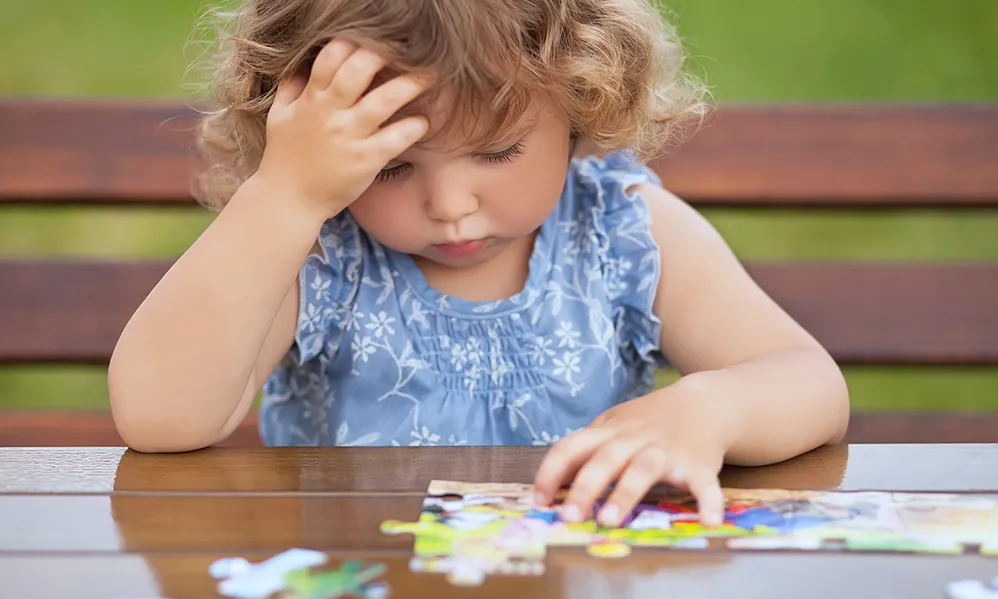To develop attention, it is necessary to know its basic properties and the degree of development of these properties in a child.

Source
1. The amount of attention:
The number of objects that the child can simultaneously perceive. Attention develops with age. Up to 3-4 years, a child can perceive only one object, usually something bright and unusual. At the age of 5-6 years, there may already be several such objects, usually 2-3. To check the amount of attention, do a simple test: put several objects (10-12) on the table, cover them with something, then remove the cloth for 3 seconds, ask the child to remember which objects are on the table and go back cover them. Then ask your child to name the items she memorized.
2. Concentration of attention:

Source
A property characterized by the ability to maintain attention on an object, without being distracted by others. To develop concentration, try doing something with your child that requires concentration in a noisy environment, such as playing music. By doing so, you can constantly complicate the task, making the music louder and louder.
3. Change of attention:

Source
The speed of transition from one type of activity to another, this property of attention requires a volitional effort. Distraction is associated with poor attention shifting, which can be compounded by fatigue and chronic illness. A child, especially an impressionable one, is sometimes unable to focus on the task for a long time due to the memory of a strong image.
The capacity for change and attention span in young children are underdeveloped. For your training, there are special exercises. For example, a younger student may be offered a "proofreader" game. The child is given a letter sheet (he can take a normal newspaper), on which he must cross out one letter, circle another, and skip the rest. For children of preschool age, instead of a newspaper, you can take a sheet with rows of geometric shapes of various colors.
The success of a child's education in school largely depends on the degree of development of volume, concentration and interchangeability of attention.
Reference:
